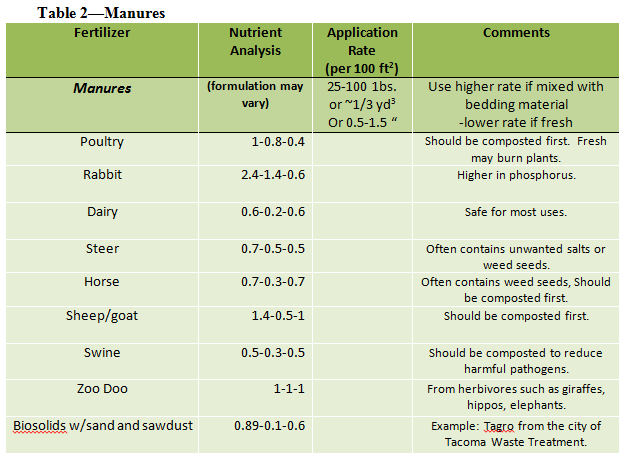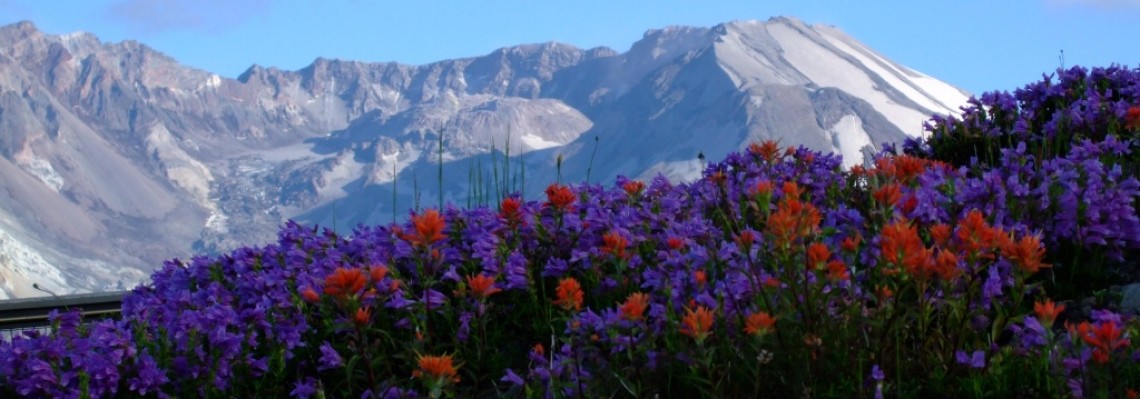Supplemental fertilizers: Chemical vs. Organic
Once you have your vegetable garden and annual flowers planted, all that’s left is to keep them growing healthy and beautiful through the summer. Along with irrigation, you may want to add additional fertilizer. As a professional horticulturist, this is probably what I neglect the most in my home gardens. Because I make sure to start with fertile soil, my plants usually don’t need additional fertilizer for several weeks. “The key to successful flowers and vegetables in your organic garden is healthy soil first, organic fertilizer second.”
Organic Gardening is defined as “gardening with fertilizers consisting only of naturally occurring animal and/or plant material, with no use of man-made chemicals or pesticides.” Although I am not a strict organic gardener, I try to use natural products as much as possible. Many chemical fertilizers are petroleum-based—and are getting more expensive as oil prices increase. I still sometimes use slow-release formulas, such as Osmocote, for my potted plants because soil nutrients are quickly depleted in containers.
The nutrient analysis (3 numbers) listed on a fertilizer package is the percentage of each macronutrient: Nitrogen : Phosphorus : potassium(K) contained within that formulation. Occasionally deficiencies of the micronutrients, Iron, Boron, or Magnesium occur; but these deficiencies may be due to improper pH.
Excluding incorporation into soils prior to planting, there are two ways to add fertilizers to established plants: Top-dressing on the top of the soil with granular products or liquid-feeding.
Examples of organic fertilizers for top-dressing are: mostly nitrogen: blood, feather, fish, soybean, cottonseed, crab, shrimp, or alfalfa meal, pelleted biosolids, and bat guano; mostly phosphorus: fish or mammal bone meal or rock phosphate; mostly potassium or other trace minerals: sunflower seed hulls, wood ashes, granite dust, greensand, kelp meal, and azomite.
Fast-growing annuals and vegetables may benefit from “foliar feeding” with a liquid fertilizer. It is well documented that many plants will absorb nutrients through their leaves. Early morning or late evening is the best time to apply liquid fertilizers such as seaweed extract, compost tea, or liquid fish fertilizer. Liquid fertilizers may be applied as a spray or injected into the irrigation system using a siphon (a simplified form is the “Miracle-gro” bottle attached to your hose). Many gardeners apply fertilizer once-a-week, but application every-other-week should be sufficient. I, personally, don’t do much supplemental feeding, but then, I never can grow the huge pumpkins that many hobby gardeners proudly produce!

 Table 2 and 3 lists some common organic fertilizers. When you select fertilizers, you should use what is available in your area and is most economical. Follow recommended fertilizer application rates– more is not better and could harm plants or just be washed away to pollute watersheds! This is especially true for liquid fertilizers. Beware of gimmicks—you should know what a product contains and what its benefits are to the soil and plants. Also many “organic” fertilizers, although from natural sources may not be all that “green,” depending on how they were collected. Some minerals are mined. Animal and plant products may have been subject to genetic engineering, pesticide-use, inhumane “factory-farming,” or over-harvesting of wild populations.
Table 2 and 3 lists some common organic fertilizers. When you select fertilizers, you should use what is available in your area and is most economical. Follow recommended fertilizer application rates– more is not better and could harm plants or just be washed away to pollute watersheds! This is especially true for liquid fertilizers. Beware of gimmicks—you should know what a product contains and what its benefits are to the soil and plants. Also many “organic” fertilizers, although from natural sources may not be all that “green,” depending on how they were collected. Some minerals are mined. Animal and plant products may have been subject to genetic engineering, pesticide-use, inhumane “factory-farming,” or over-harvesting of wild populations.
Organic fertilizers benefit the soil’s microfauna; the worms and other organisms that work together decomposing organic matter. They improve the soil by making biodegradable nutrients available again to plants. Chemical fertilizers can kill beneficial soil microorganisms.
Many gardeners will swear by certain products and are reluctant to change their practices, but just as we may need to adapt and find other energy sources, we should be willing to try different fertilizers as cost and availability change and we increase our knowledge of their effect on our environment.
(This article was first published in the Peninsula Gateway on July 7, 2010.)


To be honest, this is the first time I’m about to grow a vegetable garden and flowers for the summer. I’m glad you mentioned that you’re using slow release formulas because I was planning to buy some of those kinds of fertilizers from a manufacturer. Preferably, I would choose to buy some top-feeding fertilizers because I won’t damage the roots as much this way so I’ll consider asking manufacturers what fertilizers they can offer me.